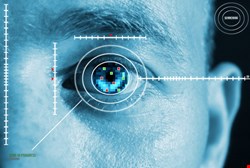
Traditional passwords are a nightmare – and if you think I’m biased, then I can tell you that Fernando Corbato, the man who invented the computer password over 50 years ago, agrees.
Consumers have the choice of replicating passwords across multiple sites, creating a crib sheet of unique passwords, or using a password manager, which – especially since OneLogin was hacked earlier this summer – ultimately leaves users to pick the best from a bad bunch.
The impact is colossal: 12% of British adults (5.9 million people) have already fallen victim to financial fraud, while one in 10 report that at least one of their online accounts has been hacked. Further, findings from a recent survey, conducted by Nuance, showed that 80% of respondents who had been victims of fraud reported feeling emotionally scarred from the incident.
Businesses aren’t getting off lightly either – UK companies reported almost £20,000,000 in fraud losses to the police last year. Beyond the immediate financial cost, businesses lost customer loyalty, with a quarter of fraud victims reporting that they stopped doing business with the organization after the incident.
This is why organizations are now turning to biometric security solutions. When looking at the results of biometric authentication deployments, it’s understandable why it is increasing in popularity. While no security solution is 100% secure, Infiniti Research estimates that voice biometrics can address 90% of fraud in a voice channel, as well as 80% of fraud in a mobile channel. In real terms, one top five bank saw a 59% decrease in account takeover within the first 30 days of deploying a biometric security solution, while a US bank prevented $6.2m in annual fraud loss.
Customers, exasperated by traditional authentication, are also demanding these solutions. A study conducted by Visa Europe revealed that nearly two-thirds of consumers want to use biometrics to make payments.
Businesses are trying to bridge the gap between good security and usability, which traditional passwords are falling short on.
Biometric authentication can either be text dependent or text independent. For voice, fingerprint or selfie biometrics, the process is typically active in asking the user to take a certain action – such as speaking a passphrase – to identify themselves. Additionally, voice biometric solutions can also enable passive authentication, where the caller can start discussing their query immediately, while the solution matches their voice to a voiceprint during the course of this natural conversation. In either case, the experience is natural, effortless and much more accurate.
For an organization, this massively improves the customer experience and with voice biometrics, it also enables companies to drive greater efficiencies in the contact center. The average length of an agent-handled security and identification check is 33 seconds, costing the industry around £1.87bn per year. This gives time back to the agents, enabling one European telco to achieve 156% increase in upsell value in the contact center.
Of course, the threat of hackers ever looms and no form of identification, whether pins, passwords, selfie identification or voice biometrics, is 100% secure. However, biometrics provide a significant advantage in increasing the sophistication of authentication without putting the onus on consumers. For example, voice biometric authentication leverages more than 100 unique characteristics: both physical attributes, like the size and shape of your nasal passage, and behavioral attributes that include accent, pronunciation or even how fast you talk.
Furthermore, the advantage for voice biometrics over other forms of authentication is that even if a hacker were to hack a database of voiceprints, that data is useless to provide access to accounts as a voiceprint isn’t the credential itself. Even if a hacker could steal a recording of the voice, playback detection technology can test incoming audio to see if it represents live speech or if it is fraudulent.
Businesses are trying to bridge the gap between good security and usability, which traditional passwords are falling short on. Biometrics have a proven success in a number of organizations – whether that’s improving the customer experience, reducing fraud or enabling customer service agents to use their time to upsell rather than authenticate customers.
Biometrics are proving a clear return on investment for companies across all industries – from government and retail banking, to consumer devices. So, it’s just a matter of when businesses adopt biometrics, not if.
